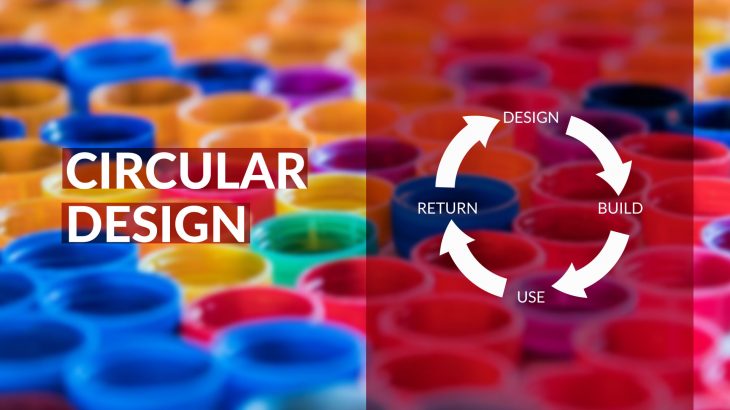“the goods of today are the resources of tomorrow at yesterday’s resource prices.” Walter R. Stahel
Walter R. Stahel, a Swiss architect and propounder of The Cradle-to-Cradle theory, gave rise to the concept of CIRCULAR ECONOMY, offering concrete alternatives to the prevailing “throwaway culture”.
PRINCIPLES OF CIRCULAR ECONOMY
Circular economy is a systemic approach that involves the circular use of resources. Whereas in the linear economy, materials are continually extracted, processed, used, and disposed of, the circular economy sets out at the very start to systematically and prudently evaluate all the possibilities for reuse of materials and substances to reduce the need for the extraction of new resources and materials. Before reaching for new materials, the circular economy looks towards previously used materials; it also seeks to keep the materials it uses in circulation for as long as possible.
WHY DO WE NEED A CIRCULAR ECONOMY?
- Let us look at a few facts to understand the graveness of the situation.
- First, 60% of discarded materials are either landfilled or incinerated, while only 40 per cent are recycled or reused as materials.
- One hundred billion products are being pumped out of factories every year.
- By 2050, the fashion industry could account for around a quarter of the world’s total carbon emissions.
- It takes almost 3,000 litres of water to make one cotton t-shirt.
- Once the world’s fourth-largest lake, the Aral Sea has dried up primarily because of cotton farming.
- In North America alone, consumers throw out the equivalent of the Empire State building in weight every year.
NEED OF THE HOUR: CIRCULAR DESIGN
The new paradigm of a regenerative circular economy requires close cooperation with circular design principles. Understanding the latter is crucial for an industry like design: as much as 80 per cent of waste and the resultant pollution results from decisions taken in the design phase of the product.
Suppose we start deliberately changing our design approach from linear to circular by making different planning and design phases. In that case, designers will have to start considering more than one product lifecycle before the design process has even begun. In advance, we will have to foresee how the product will facilitate repair, simplify dismantling, and allow waste-free final recycling of material.
Naturally, the latter does not only apply to product design; the principles of circulation must also be implemented in the transformation of business, service, and distribution models, into systemic-strategic approaches, and just as importantly, into influencing consumer habits utilising nudge theory. In other words, there is an urgent need for a systematic introduction of intelligent design and deliberate development of the circular design.
The goal is a perfect recurrence, in perpetual circulation, in finding sensible ways of avoiding waste to the maximum extent possible. The fundamental purpose of this endeavour is to optimise and minimise the extraction of new resources.
For instance, some brands have recently announced that they aim to become 100 per cent ‘circular’ by 2030. Last year, London Fashion Week prohibited designers using animal fur on its catwalks following pledges by brands such as Burberry, Gucci and Versace to go fur-free. Meanwhile, Adidas and G-Star RAW have developed apparel made from ocean plastic, with Adidas selling over a million from its ‘Parley’ range in 2017.
There are new innovative ways to dye clothes without water; some brands do simple things like accepting their old products in-store, processes are being trialled where fibres can be broken down to their original chemical components and then re-spun into different fibres to make a garment again at the same quality, which means we do not have to keep relying on virgin fibres, leather made from grape skins and orange skins, which means leather can grow in a laboratory rather than relying on animals, new business models on ” rent or swap it”.
WHAT CAN WE DO AS INDIVIDUALS AND BRANDS?
In 2014 an EU Action Plan for the Circular Economic was announced, and the UK Environmental Audit Committee has announced that it will investigate the rise of ‘ fast fashion’ and its impact on the environment. However, in a world where most trade happens in parts and components in highly globalised value chains, promoting global resource circularity goes through international rules.
Thus, what is required is Global inclusion: of cooperation, individuals and consumers empowered with design education. There is a need to actively change the prevailing mentality in design and identify circular design as a prominent issue.
As an individual, ask yourself the following questions: Why am I buying a product? Do I need it? Do I know who has made it? Whether I trust that the brand that has made it has done it the right way? Once informed, these questions will bubble up inside you every time you go shopping.
Brands need to emphasise the intent behind the products they manufacture, improve their social and environmental footprints, voluntarily adopt sustainability standards and Corporate Social Responsibility (CSR) while keeping Circular design at the epicentre.
It has to be made sure that the adjective “Circular” does not become redundant when discussing design. The circular model of operation must become a categorical imperative in design. It must become a completely normal way of designing.
